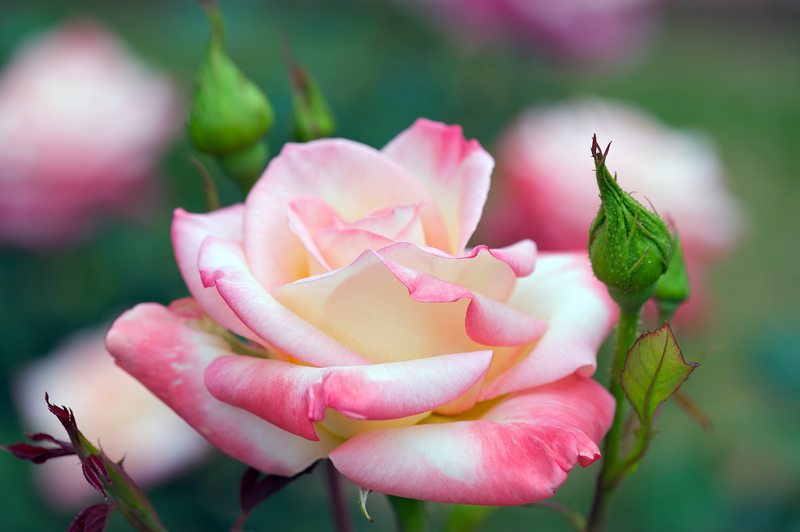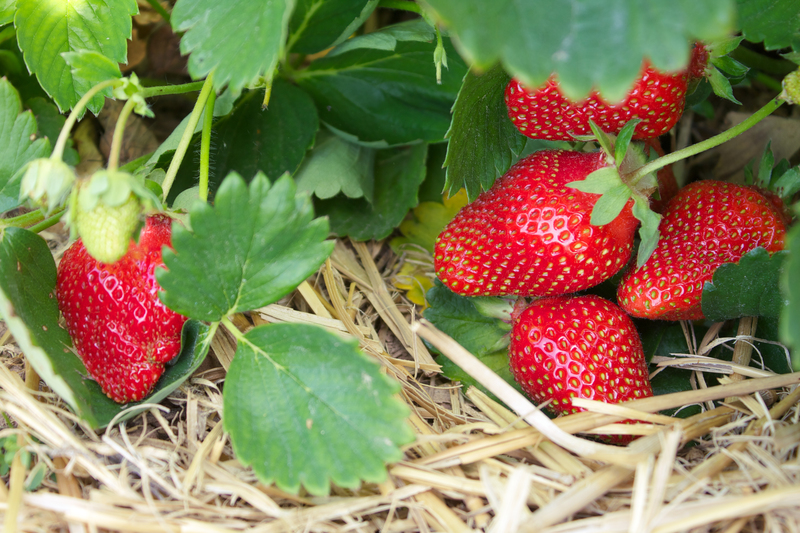Steps to Develop a Stimulating Garden for Young Minds
Posted on 19/09/2025
Steps to Develop a Stimulating Garden for Young Minds
Creating a stimulating garden for young minds is one of the most effective ways to encourage curiosity, creativity, and a lifelong love for nature among children. Whether you are a parent, teacher, or community leader, you can inspire learning, discovery, and play by thoughtfully designing an outdoor space that invites children to explore and engage with the environment. In this comprehensive guide, we'll walk you through essential steps to develop a sensory and educational garden space that captivates young learners and fosters holistic growth.

Why Create a Stimulating Garden for Children?
Introducing children to gardening can have profound benefits. Not only does it teach them about science, biology, and ecology, but it also develops fine motor skills, patience, and responsibility. Plus, gardening offers a natural setting for imaginative play, problem-solving, and sensory exploration. With the right planning, your children's garden can become a sanctuary for physical activity, mindfulness, and real-world learning.
Planning Your Enriching Garden Space
Assessing Your Available Area
Start with a careful assessment of the space you have. Whether your garden is a small backyard patch, a school courtyard, or a dedicated section in a local park, understanding your area's potential will help you make the most of what you have.
- Sunlight: Observe how much sunlight the area receives during the day. This will influence your plant choices.
- Soil Quality: Conduct a soil test or simply examine the texture and drainage of your soil.
- Microclimates: Note places sheltered from wind, or areas near buildings that may retain more heat.
- Accessibility: Ensure the space is safe and accessible for children of all abilities.
Setting Goals for Your Children's Garden
Determine the primary purpose of your stimulating garden for youth. It could be:
- Hands-on science experiments (e.g., observing insects, plant growth, or water cycles)
- Growing food for healthy eating initiatives
- Sensory exploration with textures, colors, and scents
- Creative play and storytelling spaces
- Spaces for quiet reflection and relaxation
- Environmental stewardship, such as learning about composting and recycling
By clarifying your objectives, you can tailor your design to spark learning and excitement in your target age group--from toddlers to pre-teens.
Designing a Child-Friendly Stimulating Garden
Incorporating Zones for Exploration
Children thrive in environments that have distinct zones for different activities. Consider breaking up your garden into several thematic sections:
- Sensory Area: Plants and features that engage smell, touch, sight, hearing, and taste.
- Edible Garden: Incorporate fruits, vegetables, and herbs for tasty, hands-on learning.
- Mini Wildlife Habitat: Install a bug hotel, bird feeders, or small ponds to attract native creatures.
- Imaginative Play Zone: Add hidden paths, small forts, fairy gardens, or natural loose parts for open-ended play.
- Quiet Corner: A cozy reading nook, bench, or hammock for reflection or story time.
Pick Safe, Stimulating Plants
When selecting plants for a young people's educational garden, prioritize safety and sensory appeal:
- Non-toxic and thorn-free species
- Diverse colors, textures, and scents (e.g., lamb's ear, sunflowers, lavender, mint)
- Fast-growing plants for instant gratification (radishes, sunflowers, nasturtiums)
- Edible flowers and herbs (borage, calendula, cherry tomatoes, strawberries)
- Creepers for ground cover and forts (sweet peas, pumpkin, morning glory on teepees)
Always double-check plant safety for children and be mindful of potential allergies.
Natural Materials and Sensory Features
Use natural materials to add tactile and visual interest:
- Mulch, pebbles, wood rounds, and sand for different surfaces
- Miniature water features like fountains or birdbaths for sound and touch
- Wind chimes and musical installations
- Mirrors, colorful mosaics, or painted rocks for visual stimulation
These elements provide opportunities for children to learn through direct interaction with their surroundings.
Implementing Practical and Inspiring Garden Features
Raised Beds and Movable Containers
Use raised garden beds or large containers to help young children participate more easily in planting and harvesting. These are also great for schools or urban gardens with limited space. Ensure containers are stable and at a handy height for children's reach.
Pathways and Access Ways
Create clearly defined pathways with mulch, stepping stones, or wooden rounds. Paths guide children's exploration and protect delicate areas. Consider curving paths and secret nooks to encourage adventure and imagination.
Outdoor Classrooms and Activity Zones
Set up tables and seating areas for group activities, art projects, or science experiments. Outdoor blackboards, easels, or weatherproof storage bins for tools and art supplies can greatly enhance the usability of your space for stimulating experiences.
Shade, Shelter, and Comfort
Ensure children are comfortable by adding natural or artificial shade. Options include tree canopies, pergolas, cloth sails, or kid-sized tents. Also, provide easy access to drinking water and sunscreen.
Involving Children in the Garden Design Process
Encouraging Ownership and Creativity
Invite children to help plan, plant, and decorate the garden. Not only does this boost excitement, but it also develops a sense of responsibility and belonging. Ways to involve them include:
- Drawing or painting their dream garden
- Choosing seeds and plants from a safe, curated list
- Crafting homemade garden decorations
- Building habitats for beneficial insects or birds
Shared Decisions and Problem-Solving
Discuss challenges and solutions together, such as how to water plants during vacation or deter garden pests. This encourages children to think creatively and develop problem-solving skills.
Educational and Playful Activities for a Children's Garden
Hands-on Gardening Projects
- Planting seeds and bulbs in succession for continuous blooms
- Creating vegetable "pizza gardens" with tomatoes, basil, and peppers
- Keeping a garden journal with sketches and observations
- Measuring plants' growth and creating simple charts
Themed Nature Hunts and Science Experiments
- Scavenger hunts for colors, textures, or types of leaves
- Insect observation with magnifying glasses
- Composting food scraps and observing decomposition
- Building mini terrariums or fairy gardens
Storytelling and Creative Play
- Story time under a shady tree or in a willow den
- Making up stories about plant and animal "residents"
- Pretend play with natural materials as props (e.g., acorn hats, stick wands)
Encouraging Ongoing Engagement and Maintenance
Rotating Activities and Garden Duties
Assign fun, age-appropriate jobs throughout the seasons, such as watering, weeding, harvesting, or painting signs. Rotate responsibilities to keep children interested and impart a variety of basic gardening skills.
Celebrating Progress and Harvests
Host mini harvest parties, cooking sessions, or art shows using garden-grown produce or flowers. This helps children see tangible results from their hard work and encourages a sense of accomplishment.
Integrating Technology Thoughtfully
While the aim is to connect with nature, you can use apps to identify plants, track growth with time-lapse photos, or share a digital portfolio of the garden's development. Balance screen time with hands-on exploration for best results.

Ensuring Safety and Accessibility for All
Safe Design Practices
- Choose tools sized for children and store them securely
- Always supervise young children, especially around water features
- Use non-toxic paints, materials, and soil amendments
- Maintain clean paths to prevent trips and falls
Inclusivity in the Garden
Design your stimulating garden for young people of all abilities by including:
- Wide, stable paths for wheelchairs and strollers
- Raised beds at accessible heights
- Clear visual and tactile cues for navigation
Conclusion: Cultivating a Love of Nature and Learning
A well-designed stimulating garden for young minds is more than a collection of plants--it's a living, breathing classroom that nurtures curiosity, collaboration, and discovery. By planning thoughtfully, choosing kid-friendly features, and keeping children at the center of the process, your garden will become a cherished environment for growing both plants and young minds.
Remember, the greatest gardens are those that evolve with the interests and ages of their caretakers. Refresh features, add new activities, and let children's imaginations shape the future of your learning garden. Start today and reap the lifelong benefits of connecting young people with the natural world.
Frequently Asked Questions About Creating a Stimulating Children's Garden
- What plants are best for a children's sensory garden?
- Opt for non-toxic, sensory-rich plants like lavender (scent), lamb's ear (touch), sunflowers (sight), mint (taste), and bamboo (sound).
- How can I make my small garden stimulating for kids?
- Use vertical gardening, containers, and creative features like small fairy houses, art rocks, or a container water play area to maximize interest in a compact space.
- Are gardens suitable for very young children or toddlers?
- Yes! With careful supervision, age-appropriate plants, and safe zones, even toddlers can enjoy and benefit from a stimulating garden designed for their abilities.
- How can I engage local schools or communities in a stimulating garden project?
- Partner with educators, invite children to take part in the design and planting, and host garden-based events or learning sessions for families and school groups.
Ready to develop your own stimulating garden for young minds? Gather your ideas, involve your children, and start planting seeds of discovery today!

